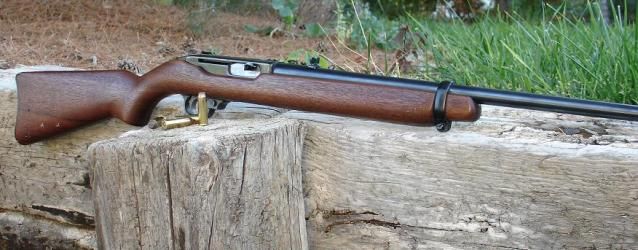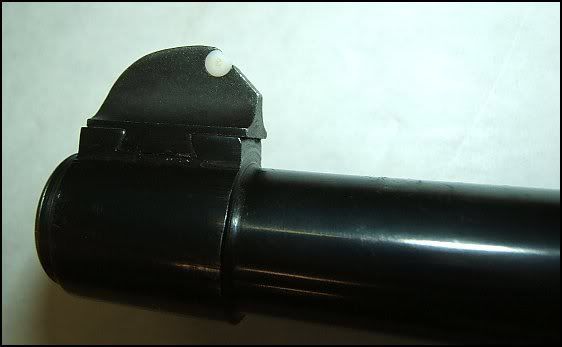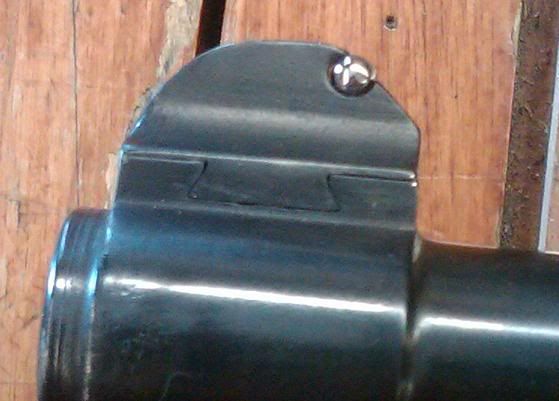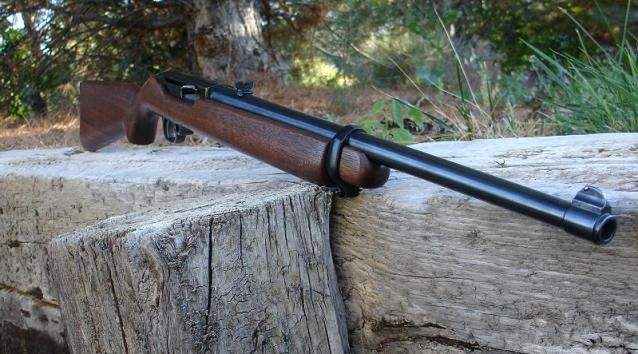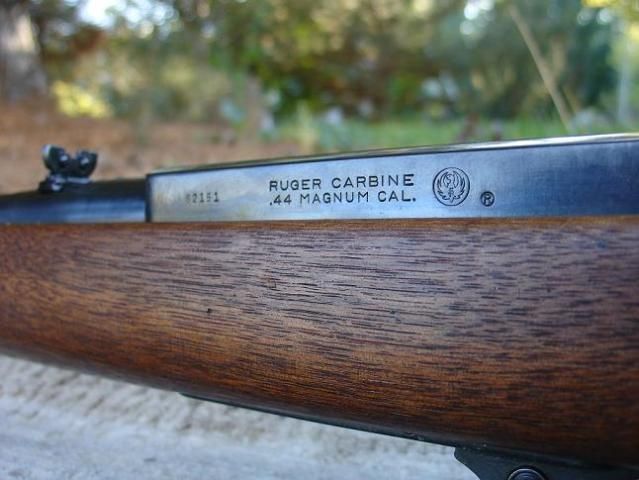This is a sneak peek at another future article. As always, comments are welcome.
John
Ruger .44 Magnum Semiauto Carbines
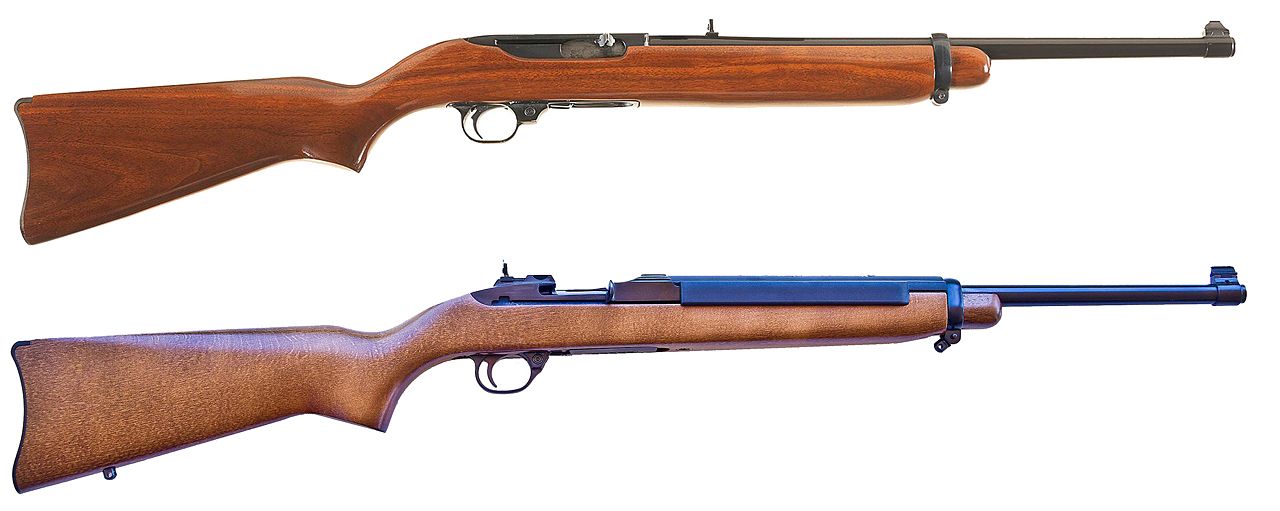
The .44 Magnum cartridge, when fired in a light carbine, is a marvelous short-range game-getter. It’s especially effective on deer, black bear, feral hogs and the javelina of the Southwest. However, as I can personally attest, firing a light lever action or single shot rifle in that caliber will leave you with a bruised shoulder that you’ll feel for weeks. Way back in 1960, however, Bill Ruger, working closely with famed designer Harry Sefried, found the solution: a .44 Magnum self-loader in which the action absorbed much of the recoil, making it more comfortable to fire and offering quick follow-up shots. Weighing in at 5 pounds and 12 ounces, it was handy to pack and quick to bring into action. Although most folks today are not aware of it, this was only the first of two distinct models that had quite different actions.
The first model was introduced in this manner: “America’s newest game rifle…Proven on the plains of Africa, the RUGER ‘Deerstalker’ carbine is a technological breakthrough for the benefit of American sportsmen…proven not only on Whitetails in North American, but on Leopard, Hyena, Wart Hog, Topi and many other species in Africa…developed to provide the sportsman with the best possible rifle for hunting deer and other medium-sized game in brush country.”
Bill Ruger did indeed personally test this gun on a variety of African game, including killing a leopard with one shot at 100 yards. Accounts and photos were extensively used in Ruger advertising.
The carbine measured 36 ¾” overall. The 18 1/4” barrel (later lengthened to 18 ½) had 12 rifling grooves with a 1 turn in 38” twist. The receiver was machined from chrome-molybdenum steel. The tubular magazine held 4 rounds, and was filled through an opening in the bottom of the receiver, just forward of the trigger guard. It used a short-stroke piston to drive an internal slide which rotated the bolt to unlock the breech from the receiver. The bolt remained open after the last shot was fired, and could be released with a latch ahead of the trigger guard. There was a cross-bolt safety in front of the trigger that locked both the sear and the internal hammer. Lyman front and rear sights were standard, and the top of the receiver was drilled and tapped to accept Weaver-type scope mounts.
The standard carbine stock was oil-finished American walnut. International (full length) and Sporter style stocks were offered as options. Both of these had sling swivels and pistol grip caps, and were checkered at the wrist and forend.
Retail prices in the 1960 catalog were $108 for the standard, $118 for the sporter, and $128 for the international model. The guns themselves began to be distributed in September, 1961. It’s worth noting that a virtual look-alike clone of this carbine in .22 Long Rifle caliber was offered in 1964, the Ruger 10/22 carbine, which continues in Ruger’s lineup to this day.
The initial name “Deerstalker” was not used on the carbine for long. It seems that the Ithaca Gun Company had a “Deerslayer” shotgun, and according to Ruger, “…to avoid any hard feelings, we changed our rifle’s name to simply ‘the Ruger 44 Carbine.’”
The carbine proved to be nearly indestructible, built “like a tank” in the tradition of most Ruger guns. Two samples were sent to the H.P. White Laboratory in Maryland to see what it would take to blow them up. Even with a full case of fast-burning Bullseye powder, generating over 100,000 pounds per square inch of pressure, the guns held together, although a ring in the chamber was generated. One caution had to be observed in the use of the guns; only jacketed bullets were recommended. Shaved lead from lead bullets would foul the gas port, leading to malfunctions that would be very difficult to remedy.
This first Ruger carbine was made through 1985, with a production total of over 250,000. A final 25th anniversary model was made, with a Ruger “phoenix” medal in the stock. The gun was finally dropped from the Ruger lineup due to increased production costs. This left a gap in the autoloading .44 niche for 15 years, when in 2000, the company launched the second version of the genre, the “Deerfield” .44 Magnum semiauto carbine.
Capitalizing on its experience with the successful Mini-14 .223 carbines, Ruger decided to apply the strong and simple M1 carbine-style action to work with the .44 Magnum cartridge. Adapting the action of the Mini-14 to .44 Magnum was simple enough, but inasmuch as the .44 is a rimmed cartridge, a box-magazine feed system was out of the question. The rims would catch on each other as they moved upward and forward in a conventional box magazine. The answer was right there in front of them – the rotary magazine of the 10/22 carbine (itself based on the Savage Model 99 rifle) was made specifically to deal with rimmed cartridge feeding. The decision was made to craft a similar 4-shot rotary mag in .44 Magnum. This was done. It was discovered that two problems existed with the action. First, the exposed operating rod’s movement could be restricted with the support hand on the forend. This problem was solved with a black polymer covering shield which also serves as a top handguard. A Ruger crest is molded into it. Secondly, because the M1-type action ejects empty cartridges upward, a scope mounted over the action would be hit repeatedly by the ejected brass. The solution here was a leather “scope protector” which was provided with each rifle. It could be fitted around the scope turrets to protect them from the impact of the brass. This was a bit less than elegant, but it worked with most scopes. The action does not lock back after the last round is fired, but a pin in the bolt handle like that on the military M1 carbine can be pushed down when the bolt is retracted to keep it there. A crossbolt safety nearly identical to the original is utilized.
The Deerfield “99/44” carbine resembles the original carbine in general configuration, but measures a full 37 inches, just ¼” longer. The stock, no longer having to conceal a tubular magazine, is somewhat slimmer. The standard carbine configuration includes front and rear quick-release sling swivel mounts. A folding aperture rear sight mounted closer to the eye on the rear of the receiver is provided, and can be removed when a scope is mounted. As with the original carbine, optional International and Sporter stock configurations were available. This newer gun weighs 6 pounds and three ounces, a bit heavier than the original. It has an 18 ½” barrel with a 1:20 twist, and six-groove rifling versus the old 12-groove type. Ruger scope rings and one magazine were included with each rifle when new, and the introductory retail list price was $649.
This carbine proved to be quite accurate, with one-inch 50-yard three-shot groups being common with most ammunition. Within 100 yards, like its predecessor, it’s a very handy and effective medium game dropper.
This gun could have had an alter ego as an effective defense carbine if a high-capacity magazine had ever been designed for it, perhaps similar to the current Ruger BX-25 .22LR mag that works so well in the 10/22 carbine. Sadly, that possibility was never explored, and with lackluster sales, the Deerfield 99/44 passed into history in 2006. Production figures are sketchy, but it appears that roughly over 18,000 of these guns were manufactured.
Today, both Ruger .44 Magnum autoloading carbines are experiencing resurging demand on the collector market, and with those who would find them ideal for hunting in the brush. They are becoming a challenge to find, as their owners tend to hang onto them. “As new” in-the-box examples have become quite pricey lately when rarely found. These interesting rifles have now become classics for which a modern-day equivalent does not currently exist.
(c) 2014 JLM
John
Ruger .44 Magnum Semiauto Carbines

The .44 Magnum cartridge, when fired in a light carbine, is a marvelous short-range game-getter. It’s especially effective on deer, black bear, feral hogs and the javelina of the Southwest. However, as I can personally attest, firing a light lever action or single shot rifle in that caliber will leave you with a bruised shoulder that you’ll feel for weeks. Way back in 1960, however, Bill Ruger, working closely with famed designer Harry Sefried, found the solution: a .44 Magnum self-loader in which the action absorbed much of the recoil, making it more comfortable to fire and offering quick follow-up shots. Weighing in at 5 pounds and 12 ounces, it was handy to pack and quick to bring into action. Although most folks today are not aware of it, this was only the first of two distinct models that had quite different actions.
The first model was introduced in this manner: “America’s newest game rifle…Proven on the plains of Africa, the RUGER ‘Deerstalker’ carbine is a technological breakthrough for the benefit of American sportsmen…proven not only on Whitetails in North American, but on Leopard, Hyena, Wart Hog, Topi and many other species in Africa…developed to provide the sportsman with the best possible rifle for hunting deer and other medium-sized game in brush country.”
Bill Ruger did indeed personally test this gun on a variety of African game, including killing a leopard with one shot at 100 yards. Accounts and photos were extensively used in Ruger advertising.
The carbine measured 36 ¾” overall. The 18 1/4” barrel (later lengthened to 18 ½) had 12 rifling grooves with a 1 turn in 38” twist. The receiver was machined from chrome-molybdenum steel. The tubular magazine held 4 rounds, and was filled through an opening in the bottom of the receiver, just forward of the trigger guard. It used a short-stroke piston to drive an internal slide which rotated the bolt to unlock the breech from the receiver. The bolt remained open after the last shot was fired, and could be released with a latch ahead of the trigger guard. There was a cross-bolt safety in front of the trigger that locked both the sear and the internal hammer. Lyman front and rear sights were standard, and the top of the receiver was drilled and tapped to accept Weaver-type scope mounts.
The standard carbine stock was oil-finished American walnut. International (full length) and Sporter style stocks were offered as options. Both of these had sling swivels and pistol grip caps, and were checkered at the wrist and forend.
Retail prices in the 1960 catalog were $108 for the standard, $118 for the sporter, and $128 for the international model. The guns themselves began to be distributed in September, 1961. It’s worth noting that a virtual look-alike clone of this carbine in .22 Long Rifle caliber was offered in 1964, the Ruger 10/22 carbine, which continues in Ruger’s lineup to this day.
The initial name “Deerstalker” was not used on the carbine for long. It seems that the Ithaca Gun Company had a “Deerslayer” shotgun, and according to Ruger, “…to avoid any hard feelings, we changed our rifle’s name to simply ‘the Ruger 44 Carbine.’”
The carbine proved to be nearly indestructible, built “like a tank” in the tradition of most Ruger guns. Two samples were sent to the H.P. White Laboratory in Maryland to see what it would take to blow them up. Even with a full case of fast-burning Bullseye powder, generating over 100,000 pounds per square inch of pressure, the guns held together, although a ring in the chamber was generated. One caution had to be observed in the use of the guns; only jacketed bullets were recommended. Shaved lead from lead bullets would foul the gas port, leading to malfunctions that would be very difficult to remedy.
This first Ruger carbine was made through 1985, with a production total of over 250,000. A final 25th anniversary model was made, with a Ruger “phoenix” medal in the stock. The gun was finally dropped from the Ruger lineup due to increased production costs. This left a gap in the autoloading .44 niche for 15 years, when in 2000, the company launched the second version of the genre, the “Deerfield” .44 Magnum semiauto carbine.
Capitalizing on its experience with the successful Mini-14 .223 carbines, Ruger decided to apply the strong and simple M1 carbine-style action to work with the .44 Magnum cartridge. Adapting the action of the Mini-14 to .44 Magnum was simple enough, but inasmuch as the .44 is a rimmed cartridge, a box-magazine feed system was out of the question. The rims would catch on each other as they moved upward and forward in a conventional box magazine. The answer was right there in front of them – the rotary magazine of the 10/22 carbine (itself based on the Savage Model 99 rifle) was made specifically to deal with rimmed cartridge feeding. The decision was made to craft a similar 4-shot rotary mag in .44 Magnum. This was done. It was discovered that two problems existed with the action. First, the exposed operating rod’s movement could be restricted with the support hand on the forend. This problem was solved with a black polymer covering shield which also serves as a top handguard. A Ruger crest is molded into it. Secondly, because the M1-type action ejects empty cartridges upward, a scope mounted over the action would be hit repeatedly by the ejected brass. The solution here was a leather “scope protector” which was provided with each rifle. It could be fitted around the scope turrets to protect them from the impact of the brass. This was a bit less than elegant, but it worked with most scopes. The action does not lock back after the last round is fired, but a pin in the bolt handle like that on the military M1 carbine can be pushed down when the bolt is retracted to keep it there. A crossbolt safety nearly identical to the original is utilized.
The Deerfield “99/44” carbine resembles the original carbine in general configuration, but measures a full 37 inches, just ¼” longer. The stock, no longer having to conceal a tubular magazine, is somewhat slimmer. The standard carbine configuration includes front and rear quick-release sling swivel mounts. A folding aperture rear sight mounted closer to the eye on the rear of the receiver is provided, and can be removed when a scope is mounted. As with the original carbine, optional International and Sporter stock configurations were available. This newer gun weighs 6 pounds and three ounces, a bit heavier than the original. It has an 18 ½” barrel with a 1:20 twist, and six-groove rifling versus the old 12-groove type. Ruger scope rings and one magazine were included with each rifle when new, and the introductory retail list price was $649.
This carbine proved to be quite accurate, with one-inch 50-yard three-shot groups being common with most ammunition. Within 100 yards, like its predecessor, it’s a very handy and effective medium game dropper.
This gun could have had an alter ego as an effective defense carbine if a high-capacity magazine had ever been designed for it, perhaps similar to the current Ruger BX-25 .22LR mag that works so well in the 10/22 carbine. Sadly, that possibility was never explored, and with lackluster sales, the Deerfield 99/44 passed into history in 2006. Production figures are sketchy, but it appears that roughly over 18,000 of these guns were manufactured.
Today, both Ruger .44 Magnum autoloading carbines are experiencing resurging demand on the collector market, and with those who would find them ideal for hunting in the brush. They are becoming a challenge to find, as their owners tend to hang onto them. “As new” in-the-box examples have become quite pricey lately when rarely found. These interesting rifles have now become classics for which a modern-day equivalent does not currently exist.
(c) 2014 JLM
Last edited:

